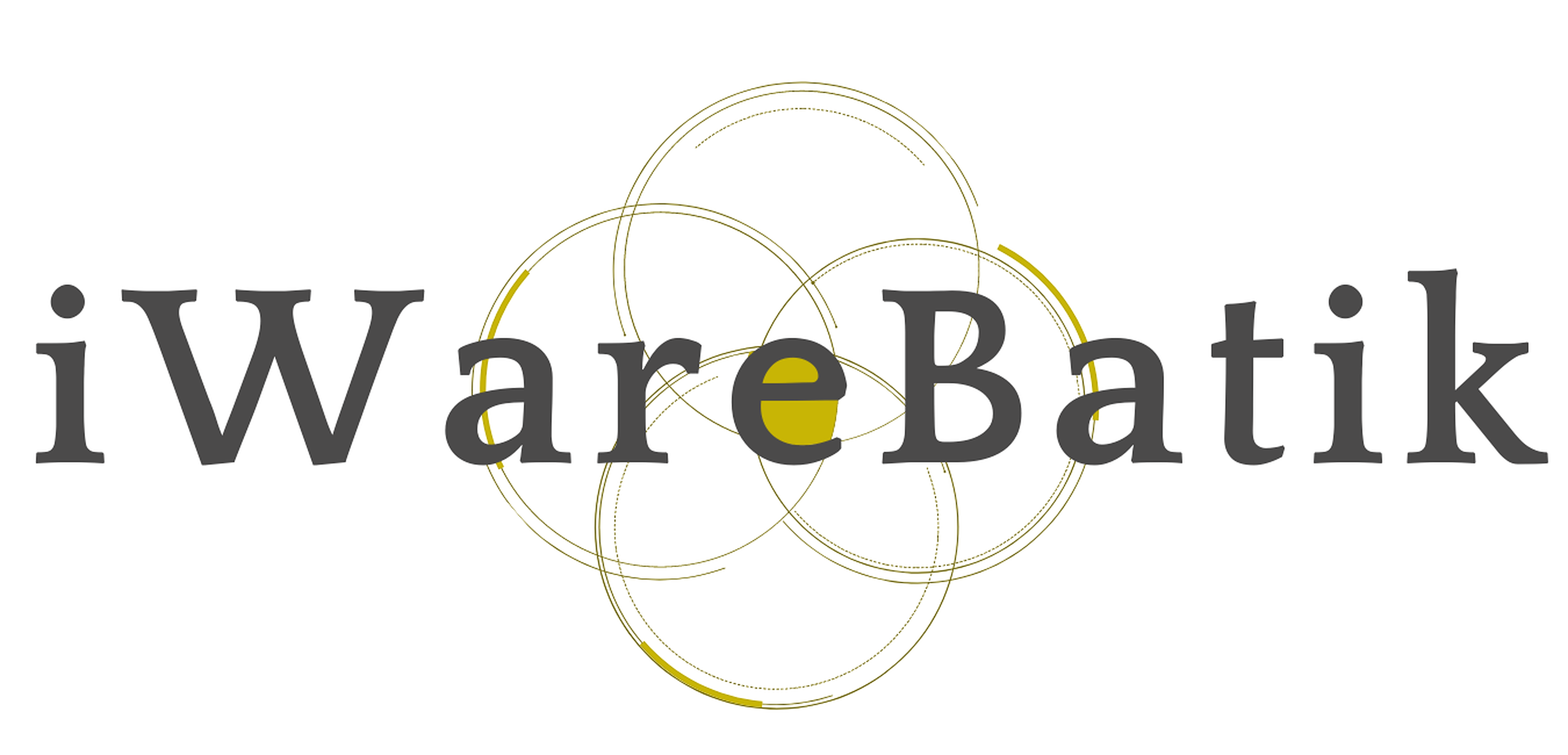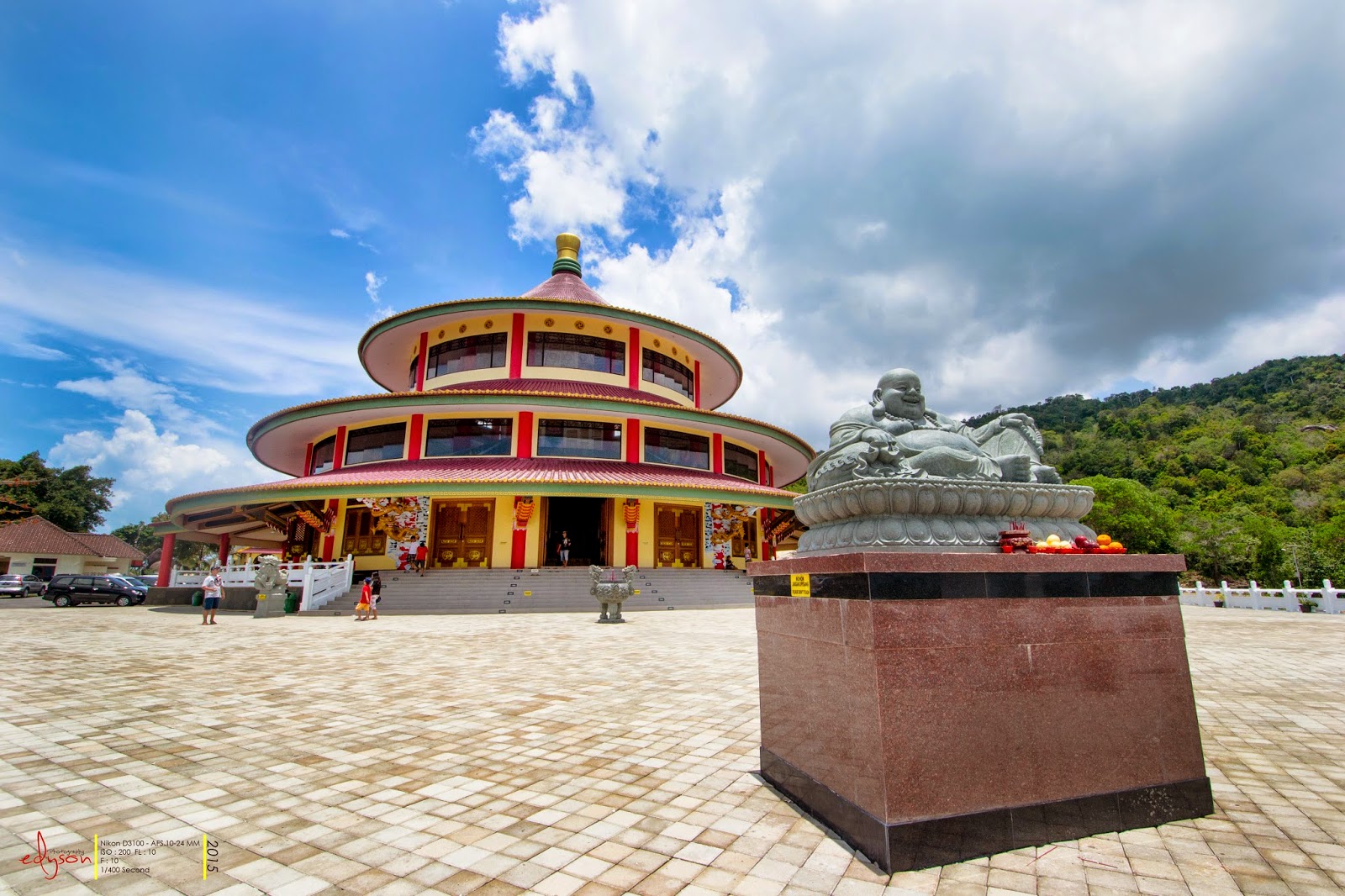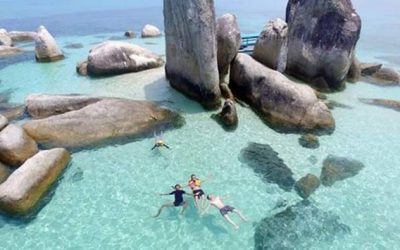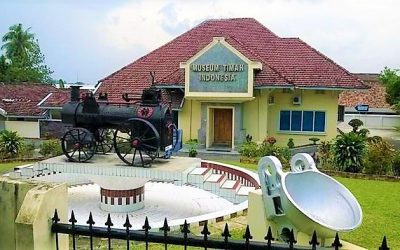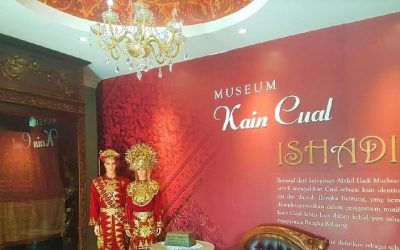Home / Batik Regions – Western Indonesia – Southern Sumatra – Bangka Belitung / Tri Agung Buddhist Shrine
Cultural Destination
Embrace the spirit of the place!
Tri Agung Buddhist Shrine
Enjoying the beauty of the beach and discovering spiritual place at the same time, why not? Feel free to pamper yourself with inner peace while visiting the historic Buddhist shrine in Tikus Island. This holy place is surrounded by a clean beach with scenic views of beautiful granite stones.
Tourist Attractions in Bangka Belitung
Tanjung Kelayang Geopark
Could you imagine if a Stonehenge was ever built on the beach?
Tin Museum
Bangka Belitung Province has the only tin museum ever built today
Cual Woven Textile Museum
This museum is the first and only museum in Pangkalpinang that provides
Bangka Belitung
Batik Motifs
Daun Simpor
This motif is inspired by the Simpor plant (Dillenia Suffruticosa) which is a typical
Daun Lada Hitam
The black pepper motif represents the main commodity of Bangka Belitung
Kain Cual
Cual textile tradition has existed since the 17th century. The word “Cual” refers to
Biji Kopi
The coffee seeds motif illustrates the pride of local coffee specialities in
Discover
Indonesian
Batik
Motifs
Gigi Haruan Lidi
The Gigi Haruan Lidi motif is taken from the name of the cork fish and is a symbol of
Teguh Bersatu
This batik motif shows the strength of the people of Kupang. It also represents a sense of
Lipaq Sabe
Lipaq Saqbe contains a simple geometric classical motif with various flower decorations. This textile is
Tubo Kelapa
Coconut tree is a symbol of a good character and strong mentality. It illustrates the more success a person, the more
Gurdo Solo
Gurdo or garuda bird is the mount of the Indian god Vishnu. As the Sun Bird,
Pattimura
Pattimura is the name of an Indonesian hero who fought against colonialism in
Pinawetengan
The Pinawetengan Batik pattern was taken from a prehistoric inscription in
Kawung
The Kawung motif was created by Sultan Agung Hanyokrokusumo (1593 – 1645) as a symbolic gift for
Rangkiang
The word “Rangkiang” refers to the rice granary in the Minangkabau language. It symbolizes
Pucuk Rebung Riau
Pucuk Rebung symbolizes heart determination in achieving goals, good luck, and
Kaharingan
The Kaharingan or ‘tree of life’ based on the Dayak tribes’ belief system. This tree symbolizes
Buketan Bali
The Balinese bouquet (Buketan Bali) is a floral arrangement and the name is
Ake Patra
Ake is related to the divinity and the composition of the universe. It is a symbol of
Gumin Tambun
Based on Hindu mythology, this motif symbolizes lucks, abundant wealth, and
Gajah Way Kambas
The motif illustrates the Lampung’s natural reserve, the Way Kambas. it also symbolizes
Sekar Jati
Sekar means flower and Jati refers to teak trees that symbolizes a strong mental character that
Gentala Arasy
Built as high as 80 meters, the tower also highlights the historical side of
Merak Ngeram
The hatching peacock motif has a very deep meaning which refers to the sacrifice and
Bale Lumbu
This motif signifies the welfare of the ancient Sasak society. Bale also symbolizes the
Enggang Dayak
Local people beliefs that hornbills are an incarnation of the Commander of the Birds. It has supernatural
Srimanganti
The name of the Srimanganti motif is derived from Palace’s hallway that connects to
Singayaksa
The Singayaksa motif comes from the name of a place where Sultan Hasanuddin used to
Kaganga Tanah Rejang
If Batik Besurek combines Arabic calligraphy motifs, then the Kaganga batik takes
Awan Berarak
Awan Berarak is a combination of Dayak motifs and Malay patterns. The word ‘Awan Berarak’ means the
Sandeq
Sandeq Boat is a symbol of the maritime importance of the West Sulawesi region. The greatness of
Kuda Kupang
Horses symbolize wealth. It contains noble values of virtuous characters that bring
Keluak Daun Pakis
The word “Keluak” is a Minang language which means twisted or tangled. The Motif of
Sido Mulyo
Sidomulyo is one of the classical motifs, which is specifically used for the bride’s costume in
Taiganja
Taiganja is a precious gold pendant that shows the social status of the Kaili family. It is
Dayak Taghol
Dayak Taghol has a distinctive style of four curved lines and small dots. This motif represents
Gamolan
This motif illustrates Gamolan, a bamboo musical instrument of Lampung that is
Jumputan Bintang
The word Jumputan means the tie-dye technique, while the word “Bintang” refers to
Salakanagara
Salakanagara batik motif illustrates the first kingdom in the Betawi land
Pohon Hayat (Tree of Life)
The Batik motifs in Lampung are dominated by the acculturation of Buddhist and
Prada Papua
The word “Prada” in the Javanese-Indonesian dialect means a batik textile that
Rumah Mamuju
the Batik motif illustrates the house of Mamuju King with the stairs, located on the left of the wooden stage house
Raja Ampat
Raja Ampat motif represents the marine life at Raja Ampat archipelago in
Tangerang Herang
Tangerang Herang motif is a symbol of Tangerang city. The Tangerang Herang batik motif consists of
Besurek Rembulan
This batik illustrates praise for God who created the wonderful universe
Paqbarre Allo
The word “Barre” means round and “Allo” means the sunlight. This motif is interpreted as
Pati-Pati Pinehiku
It symbolizes the hierarchy in society and the social status of the Mekongga
Cengkeh
The clove flower motif is the main commodity of the Tolitoli Regency. This motif represents
Burung Bidadari
Bidadari birds are endemic birds in Halmahera. This motif represents an
Gonggong Beruntun
This motif illustrates that a person should maintain a positive attitude and
Tikar Natuna
The Tikar Natuna motif is adapted from the traditional making of pandanus mats in
Manguni Minahasa
Manguni is identified as the symbol of the Minahasa people. Manguni is known as a
Bintik Tujuh
The Bintik Tujuh (Seven Dots) motif has 7 white spots and green color gradation as
Ukir Sentani
The Ukir motif is a batik motif that is inspired by various traditional Sentani wood carvings
Sekomandi
Its philosophical meaning is the eternal union which refers to a saying “until death do us part”
Honai
The Honai is inspired by the traditional house of the Papuan community living in
Leuit Sijimat
This motif reflects the daily activities of the Baduy tribe in Banten. The main ornaments of batik motif consist of:
Karawo Mahkuta
Mahkuta refers to Gorontalo’s traditional crown. It represents noble characters of
Parang Rusak
Another meaning behind this motif is an unconquerable spirit, symbolized by
Besurek Rafflesia
The term “Basurek” refers to a textile that contains letters or inscriptions
Bultiya
The word ‘Bultiya’ is an acronym of the three major tribes in North Kalimantan, namely
Tabir Tanjung
Tanjung flower is a type of Cherry tree flower, which is commonly found in
Kerawang Tegak Aceh
The Vertical Upright (Kerawang Tegak) Motif symbolizes a person who has a strong
Desa Na Tolu
The Desa Na Tolu characteristic pattern symbolizes the Batak philosophy of existence and
Lok Baintan Floating Market
As you can imagine, the most authentic thing is that you can buy things and even
Jupri Kembang Teh
Kembang Teh illustrates the tendrils of tea plants that grow in the highlands of
Wakatobi
It symbolizes the coastal beauty of the Wakatobi island and the symbol of Patra symbolizes
Bomba Mawar
This motif means sacred love for family, kingdom, and God; It also illustrates
Wirasat
Wirasat or divine inspiration is a gift from God. This inspiration is symbolized by
Tanah Liek
The word “Tanah Liek” refers to clay in Minang language. It is also known as
Biji Kopi
The coffee seeds motif illustrates the pride of local coffee specialities in
La Galigo
La Galigo is a literary work of the Buginese Epic that has 300 thousand epic lines. It is considered even
Kasih Tak Sampai
‘Kasih Tak Sampai’ is an idiom in the Indonesian language which refers to
Hiu Taliyasan
Indonesia is also home to the world’s largest fish, the whale shark (Rhincodon typus). Hiu Taliyasan refers to
Gonggong Siput
Gonggong (Strombus Turturella) is one type of sea snail found around
Mahkota Siger
Siger is the crown of a noblewoman in ancient time. It is a symbol of femininity, strength, and
Tenun Bima
The motifs are adopted from Bima woven textile. This pattern has received a great
Durian Pecah
Broken Durian motifs depict the foundation of faith. The second half signifies the mastery of
Pala Salawaku
This motif illustrates the unique weapons of the Maluku region, namely
Daun Lada Hitam
The black pepper motif represents the main commodity of Bangka Belitung
